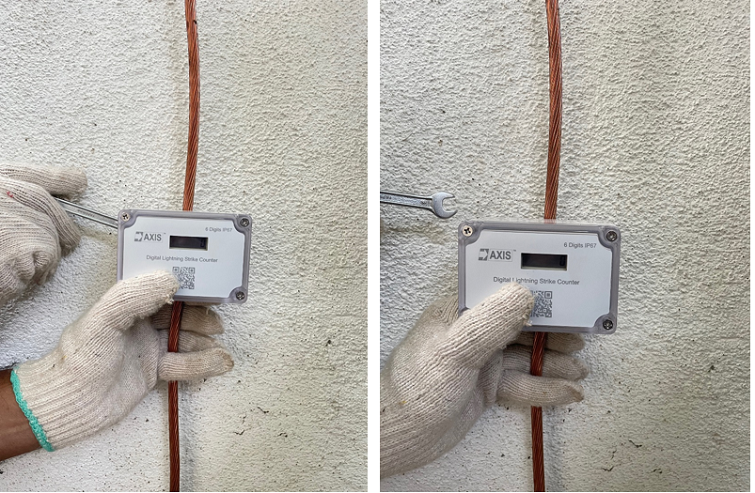How many times is your building hit by lightning every year?
A Lightning Strike Counter will give you the exact count. It is specially designed to record the number of lightning strike events and help you identify if your system requires any maintenance. In this blog, we will deep dive into these counters, which tell us about the number of lightning strikes that have hit your lightning protection system, this device is called a Lightning Strike Counter.
What is a Lightning Strike Counter?
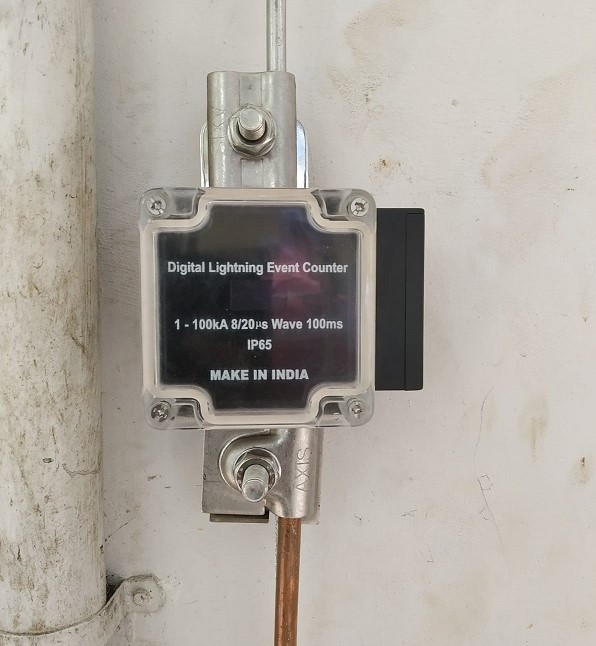
A lightning strike counter is used to record the number of lightning strike events. It gives us the exact number of lightning events experienced by the lightning protection system, thus helping us to identify if the system requires any maintenance. It is attached to the Down Conductor of a lightning protection system and records the data when current passes through it. Water-proof Lightning Strike Counters are also available for Surge Protection Devices, Lightning Rods, etc. Some advanced Lightning Strike Counters are able to identify the amplitude and polarity of the lightning, the date and time of the occurrence etc. apart from the number of lightning events.
Working of Lightning Strike Counter
As the counter is installed close to the Down Conductor, whenever a flash of lightning hits the Air Terminal, it passes through the Down Conductor to the earth. The lightning event information is gathered by electromagnetic induction caused by the current signal passing through the conductor. Thus the Lightning Strike Counter gets the exact record of the strike each time. The device has a digital display that shows the number of lightning events that have occurred.
Axis Lightning Counters have a 6-digit display and are battery-operated. The lightning counter often has a reset value, which means that it resets to 0 (zero) after the specific count value.
Features of a Lightning Strike Counter

IEC 62561-6 specifies the requirements and tests for devices manufactured to count the number of lightning strikes.
Easy installation: As most of the Down Conductors may be situated outdoors and at a height, a lightning counter should be designed for easy installation. This can include features such as a compact and lightweight design, as well as simple instructions for installation and setup.
Easy monitoring: In order to ensure that anyone can easily read the values on the display, a lightning counter should have a clear and easy-to-read display. This can include a large, screen that displays important data such as the number of strikes, the date and time, and the current battery level.
Low maintenance: A lightning counter should require minimal maintenance in order to keep it running smoothly. This can include features such as a durable design that can withstand harsh weather conditions, as well as an automatic shut-off feature that conserves battery life. Additionally, the counter should be designed to be easy to clean and maintain, with removable covers and easy access to internal components.
Good battery backup: A lightning counter should have a good battery backup to ensure that it can continue to function even during power outages.
Waterproof and weather resistant: To ensure that the lightning counter is able to withstand harsh weather conditions, it should be designed to be waterproof and weather resistant. This prevents water and dust from entering the device. Additionally, the counter should be able to operate in a wide range of temperatures and humidity levels, in order to ensure that it can continue to function in any weather conditions.
The installation process of a Lightning Strike Counter
A Lightning Counter can be installed close to the ground wire of a power SPD (ie, Surge Protection Device) or the Down Conductor of the Lightning Rod. The installation process is as follows:
Step 1: Loosen the two screw nuts at the back of the lightning counter. Next, remove the spring washer and flat gasket.
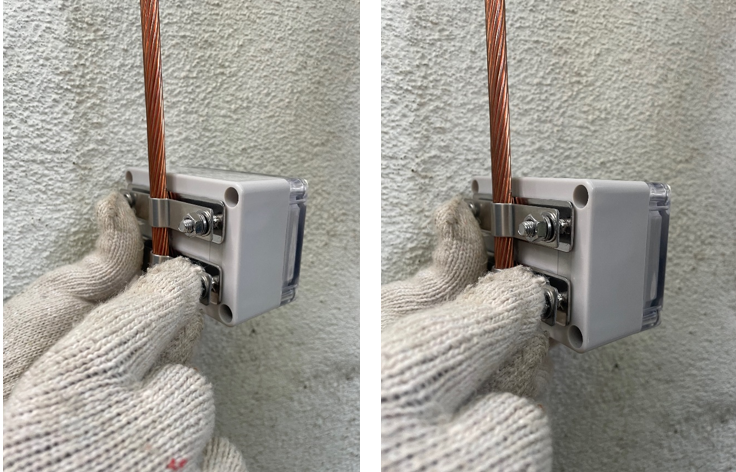
Step 2: Remove the clamp, and put the ground wire of the power SPD or the down conductor between the two screw nuts.
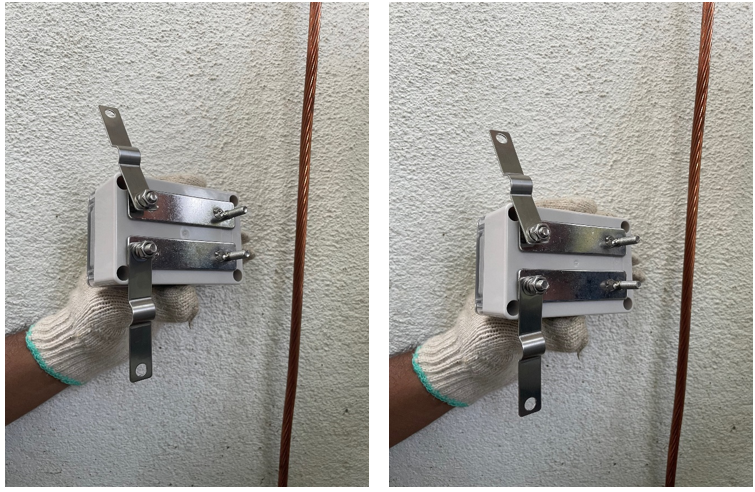
Step 3: Then place the pressing plate, flat gasket, spring washer, and screw nuts correctly and tighten the two screw nuts.
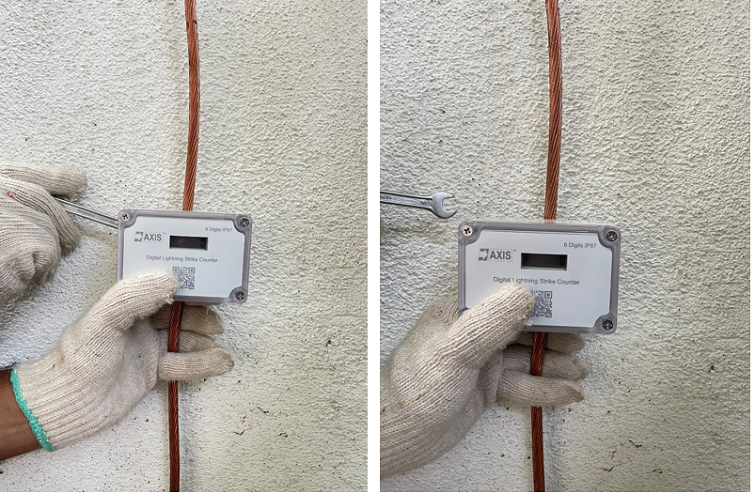
Note: Ensure that the ground wire of the power SPD or the Down Conductor of the Lightning Rod is not disturbed during installation.
Maintenance of the Lightning Counter
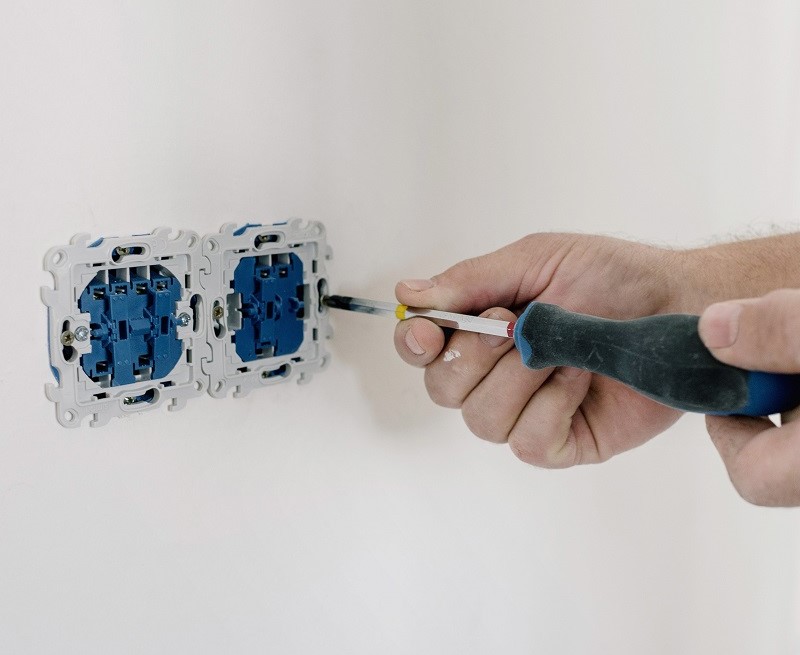
We can say that Lightning Counters do not need any special maintenance. Annual checking of the ground wire of the power SPD or the Down Conductor is needed to see whether the contact segment is well connected or not. It should be in proper contact for low resistance and accurate counting. If the down conductor is oxidized or rusty, it will affect the counting capacity of the Lightning Counter.
By providing both the hardware and the design needed to install the complete lightning protection system, Axis offers a complete solution to clients looking for Earthing & Lightning Protection including Air Terminals, Down Conductors and many more.
Thank you for reading the blog, Axis is a leading manufacturer and supplier of Electrical Components to over 80+ Countries. You can also watch our videos by our experts – click here.
Follow us on LinkedIn for regular updates on our Products!

